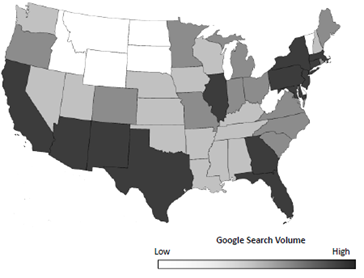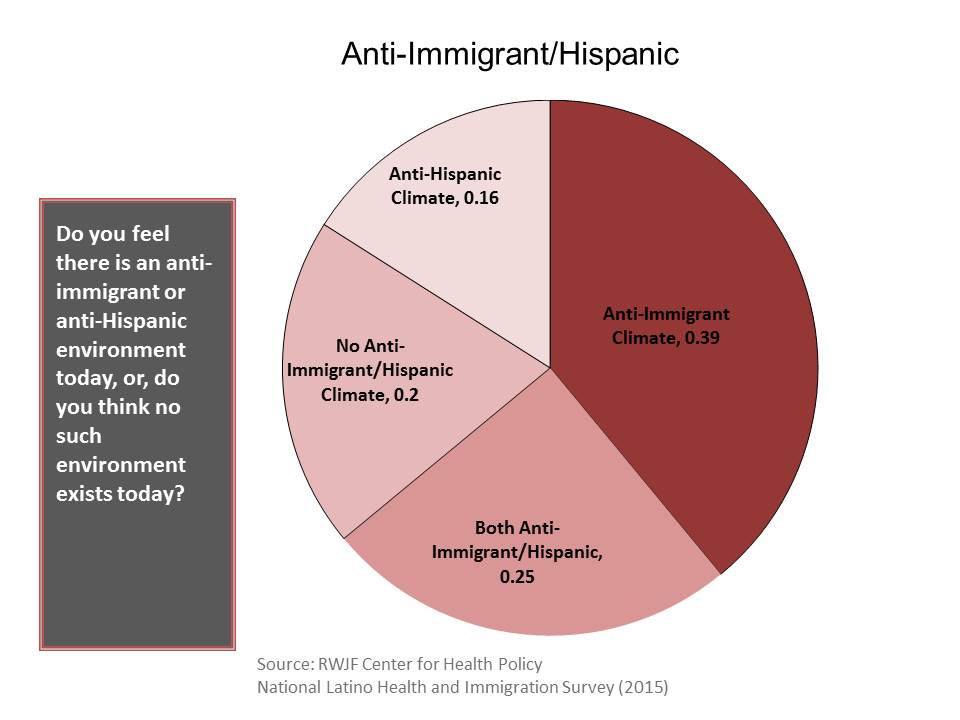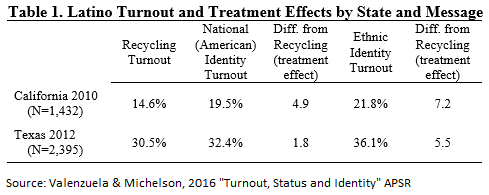Do Latinos share common political interests, or, does in-group variation produce oppositional intra-group politics that negate panethnic politics? President Barack Obama’s historic nomination of Justice Sonia Sotomayor to the United States Supreme Court provides a prime and rare opportunity to examine the political manifestations of Latino heterogeneity in a national setting. Sotomayor’s Puerto Rican heritage and New York roots are distinctive traits and ubiquitous features in media accounts of her nomination and confirmation hearings. Her background simultaneously links her with the panethnic Latino community, and differentiates her from those that reside outside the East Coast, have more recent immigrant ties, or different national origins.
Using data from Google Insights for Search, Professor Joe Ura and I consider whether state-level interest in Sotomayor is associated with the size of the Latino and Puerto Rican populations. Our findings are presented in a forthcoming Political Communication article. If Latinos around the country respond cohesively to ethnic political cues, we should observe distinct trends in Google search patterns. And, if interest in ethnic politics is relegated to more specific group identities — like national origin — then Google search trends should illustrate those differences as well. We find search volume related to Sotomayor is highest in states with larger Latino populations — Puerto Rican and other Latino origin groups.
Google Searches for “Sotomayor” – Summer 2009
There is clearly more interest in Justice Sotomayor among all Latinos, relative to non-Latino whites, evidencing a distinctive panethnic trend. Additionally, the relative size of Puerto Rican population predicts interest in Sotomayor’s nomination above and beyond the positive effects predicted by panethnic Latino population. The map illustrates search volume for Sotomayor is highest in states with concentrated Puerto Rican populations (New York area, Illinois, and Florida, for example). Similarly, states with large Latino communities that are principally of Mexican descent, such as Arizona, New Mexico, and Texas, also score highly on the Google Insights Index. These results point to the salience of ethnic cues in motivating political interest that can cut across in-group demographic differences.
To probe the relationship a bit more, we examine search trends for three different Supreme Court nominees in specific geographic regions. The table shows search patterns for Justices Alito, Roberts and Sotomayor (searches conducted one month before and after their respective nominations) in New York, Texas, and the Arizona-New Mexico region. Since there are few large cities in either Arizona or New Mexico, the two are considered one unit only for purposes of metro-level analysis. The Latino population is concentrated in specific areas within these states, so, if search volume is related to ethnicity, it should be observable in these cases.
Search by City in Four States Percent Latino Population in Parentheses
| Roberts | Alito | Sotomayor | |
| New York | |||
| 1. | Syracuse (6) | Albany (7) | New York City (27) |
| 2. | Buffalo (8) | New York City (27) | Burlington (2) |
| 3. | Rochester (14) | Albany (7) | |
| 4. | New York City (27) | Syracuse (6) | |
| Texas | |||
| 1. | Austin (35) | Austin (35) | Austin (35) |
| 2. | Dallas-Ft Worth (38) | Dallas-Ft Worth (38) | El Paso (80) |
| 3. | Houston (41) | Houston (41) | San Antonio (61) |
| Arizona and New Mexico | |||
| 1. | Phoenix (41) | Phoenix (41) | Albuquerque (44) |
| 2. | Tucson (42) | ||
| 3. | Phoenix (41) |
Latino Population Estimates Averaged 2005-2009, US Census Bureau, ACS.
In all three states, the trends are consistent: areas with large Latino populations demonstrate substantially more interest in Sotomayor compared to Roberts and Alito. New York City, home to the largest metropolitan Puerto Rican population in the United States ranks first for Sotomayor, but second for Alito and a distant fourth for Roberts. In Texas, Austin, Dallas-Fort Worth and Houston register the highest search volume in the Roberts and Alito nominations. Yet Sotomayor’s search volume is driven by interest from residents in Austin, El Paso and San Antonio. Latinos comprise 80% of the El Paso and 61% of the San Antonio population. Texas Latinos are mostly Mexican origin (84%), illustrating the salience of Spanish surname and ethnic cues in mobilizing political interest. Finally, the Arizona-New Mexico metro areas reinforce these trends with the stark outcome that shows only the Phoenix area registered enough queries for both Alito and Roberts to meet the threshold for Google Insights to assign any score at all. In this same two-state region, Albuquerque, Tucson and Phoenix ranked first, second and third in Sotomayor searches, mirroring their regional rank order in percent Latino population.
Of course, it is possible that non-Latinos in El Paso and Albuquerque fueled online searches for Sotomayor in the same way that Latinos in Syracuse and Albany could be responsible for spikes in Alito and Roberts search trends; but we think not. While these data are merely descriptive in nature, they offer a consistent pattern that supports the reasonable and theoretically sound interpretation that Latinos were interested in the Sotomayor nomination in a manner that distinguished their interested from prior nominations, and that their interest in her nomination fueled higher numbers of web searches registered by Google Insights.
Judge Sotomayor’s Latina identity, evident in her surname and a ubiquitous feature of public biographies, cued panethnic interest among Latinos with seemingly less in common with the nominee, as evidenced in places like El Paso, Texas and Albuquerque, New Mexico. Specific Puerto Rican identity triggered the most pronounced attention to the event, indicative of the enduring salience and attachments to particularized national origin groups. The Sotomayor nomination may offer a preview of Latino identity politics in future national political contests: Latino candidates deriving elevated support from the panethnic Latino community and especially high levels of support from their national origin compatriots.



